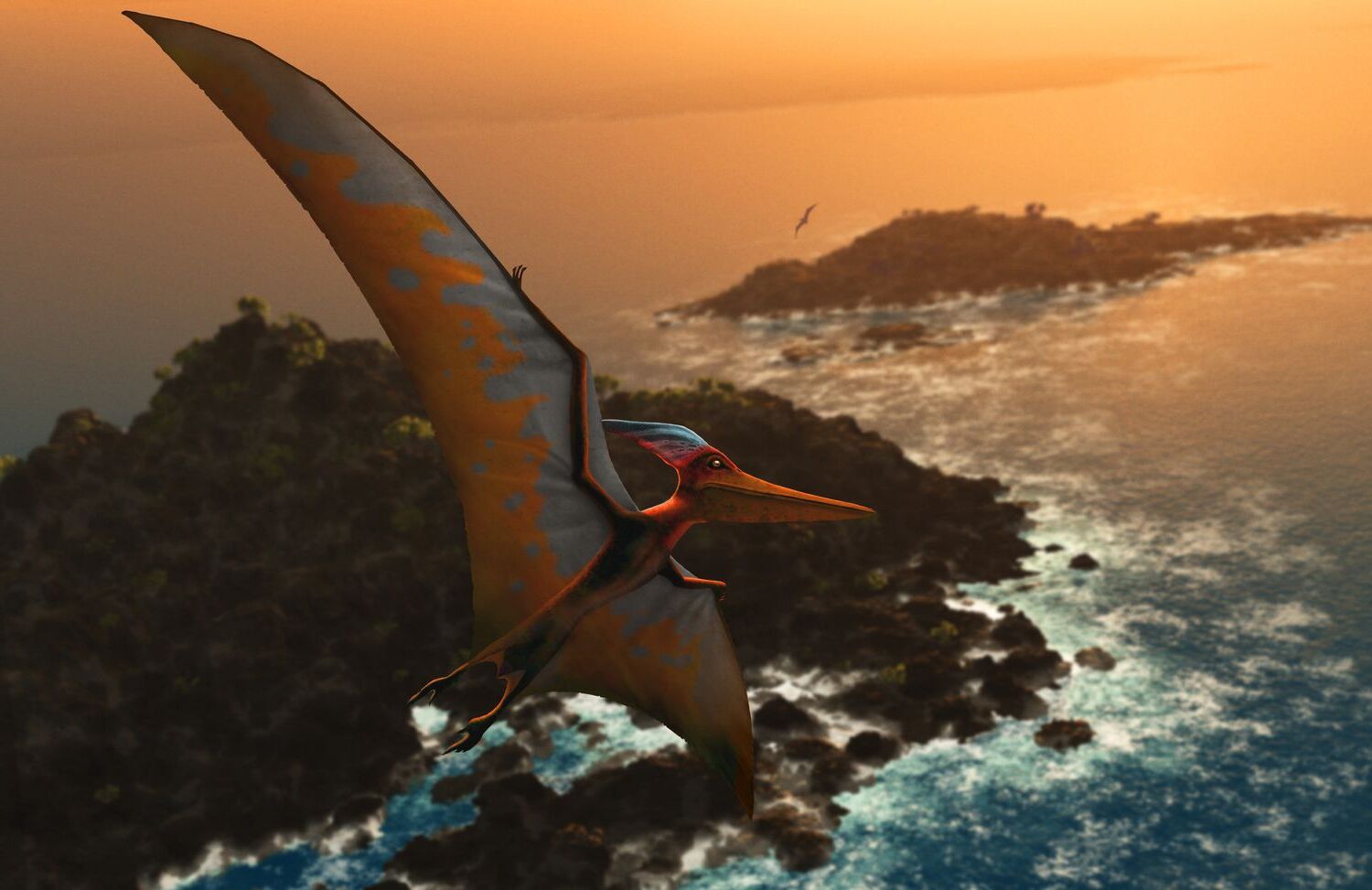
Ever wondered about the magnificent creatures that ruled the skies during the Mesozoic Era? Pterodactyls, those winged reptiles that spark our imagination, have a story to tell that's as fascinating as any dinosaur's. But what really sets them apart? Were they dinosaurs, or something entirely different? Pterodactyls were not dinosaurs, but rather flying reptiles that shared the planet with them. With wingspans that could stretch over the length of a school bus, these creatures were the undisputed masters of the prehistoric skies. From their diet to their daily habits, and even the way they took flight, there's a lot to uncover about these ancient animals. Ready to soar into the past and uncover some mind-blowing facts about pterodactyls? Let's flap into it!
Key Takeaways:
- Pterodactyls were not dinosaurs but flying reptiles, living around 150 million years ago. They varied in size, had a carnivorous diet, and went extinct due to harsh conditions.
- Despite their extinction, pterodactyls continue to capture our imagination and contribute to our understanding of prehistoric life through fossils and modern technology.
What Exactly Were Pterodactyls?
Pterodactyls, often mistaken as dinosaurs, were actually flying reptiles. Part of the pterosaur family, these creatures lived during the Late Jurassic period, around 150 million years ago. Unlike birds, pterodactyls had wings made of a membrane stretching from their elongated fourth finger to their hind limbs. This design allowed them to soar through prehistoric skies with ease.
- Pterodactyls were not dinosaurs but flying reptiles.
- They lived during the Late Jurassic period, approximately 150 million years ago.
How Big Were Pterodactyls?
Size varied significantly among pterodactyl species. While some were as small as a modern-day pigeon, others boasted wingspans that could reach over 30 feet. This vast range in size shows the incredible diversity of these ancient flyers.
- Some pterodactyl species had wingspans over 30 feet wide.
- Others were as small as pigeons, showcasing the diversity among these creatures.
What Did Pterodactyls Eat?
Primarily, pterodactyls were carnivores. Their diet mainly consisted of fish, which they caught by skimming the water's surface with their beaks. However, some species might have fed on small animals or scavenged for dead creatures. Their sharp teeth and beaks were perfect tools for their predatory lifestyle.
- Pterodactyls mainly ate fish, catching them by skimming water surfaces.
- Sharp teeth and beaks helped them in their carnivorous diet.
How Did Pterodactyls Fly?
Pterodactyls were skilled flyers. Their wings, supported by a strong membrane and elongated fingers, allowed for various flight techniques. Some could flap their wings vigorously for fast flight, while others might have been more adapted to gliding over long distances. This adaptability in flight helped them thrive in various environments.
- Their wings were supported by a membrane stretching from their fingers to their hind limbs.
- This design enabled both flapping and gliding flight techniques.
Pterodactyl Reproduction and Lifespan
Pterodactyls laid eggs, similar to birds and most reptiles. Fossils have shown that they cared for their young, at least until they could fly. While the exact lifespan of pterodactyls remains a mystery, it's believed they could live for several decades, depending on the species.
- They laid eggs and cared for their young.
- Lifespan could extend to several decades, varying by species.
The Extinction of Pterodactyls
Pterodactyls, along with dinosaurs and many other prehistoric species, went extinct about 66 million years ago. This mass extinction event, likely caused by a combination of volcanic activity and a massive asteroid impact, changed Earth's climate drastically. Such harsh conditions made survival impossible for these magnificent flyers.
- They went extinct approximately 66 million years ago.
- A combination of volcanic activity and an asteroid impact likely caused this mass extinction.
Pterodactyls in Popular Culture
Despite their extinction, pterodactyls have captured the imagination of many. They frequently appear in movies, books, and television shows, often depicted as fearsome creatures. This fascination reflects our enduring curiosity about these ancient beings and their world.
- Pterodactyls are popular in movies, books, and TV shows.
- They are often depicted as fearsome creatures, highlighting our fascination with them.
The Legacy of Pterodactyls
Pterodactyls, with their unique flying abilities and diverse lifestyles, have left a lasting impression on paleontology. They help scientists understand the complexity of prehistoric life and the evolution of flight in vertebrates. Even today, new discoveries related to these ancient reptiles continue to enlighten us.
- Their unique biology helps scientists study prehistoric life and flight evolution.
- New discoveries about pterodactyls are still being made, enriching our understanding of the past.
Pterodactyl Fossils Around the World
Fossils of pterodactyls have been found on every continent, indicating their widespread presence during the Jurassic period. These findings provide valuable insights into the prehistoric ecosystems in which they lived and how they might have interacted with other species.
- Pterodactyl fossils have been discovered worldwide.
- These findings shed light on their interactions and ecosystems.
Understanding Pterodactyls Through Modern Technology
Advancements in technology, such as 3D scanning and computer simulations, have allowed scientists to study pterodactyls in unprecedented detail. These tools enable researchers to reconstruct their flight patterns, behaviors, and even appearances, bringing us closer to understanding these fascinating creatures.
- Modern technology aids in detailed studies of pterodactyls.
- Tools like 3D scanning and simulations help reconstruct their life aspects.
A Final Glide Through Pterodactyl Insights
We've soared through the skies of prehistory, uncovering fascinating details about pterodactyls. From their distinct anatomy to their diverse diet and mysterious extinction, these creatures continue to captivate our imagination. They weren't just mere reptiles with wings; they were skilled flyers, each species uniquely adapted to its environment. Their fossils tell stories of a time when Earth was a very different place, offering invaluable insights into evolution and the history of life on our planet. As we close our exploration, remember, pterodactyls are more than just icons of prehistoric life; they're a testament to the incredible diversity and adaptability of nature. Keep looking up; you never know what ancient secrets the next fossil might reveal.
Frequently Asked Questions
Was this page helpful?
Our commitment to delivering trustworthy and engaging content is at the heart of what we do. Each fact on our site is contributed by real users like you, bringing a wealth of diverse insights and information. To ensure the highest standards of accuracy and reliability, our dedicated editors meticulously review each submission. This process guarantees that the facts we share are not only fascinating but also credible. Trust in our commitment to quality and authenticity as you explore and learn with us.


